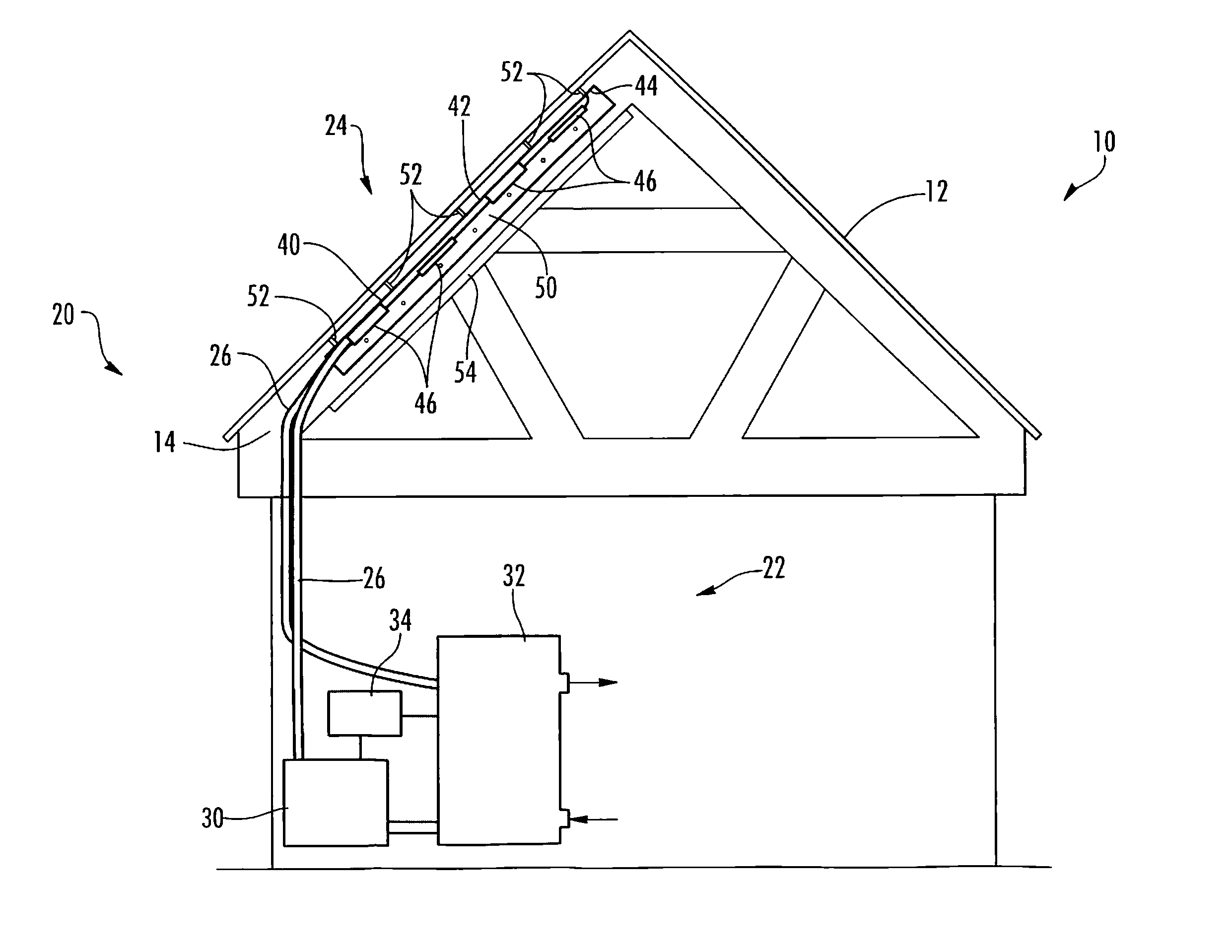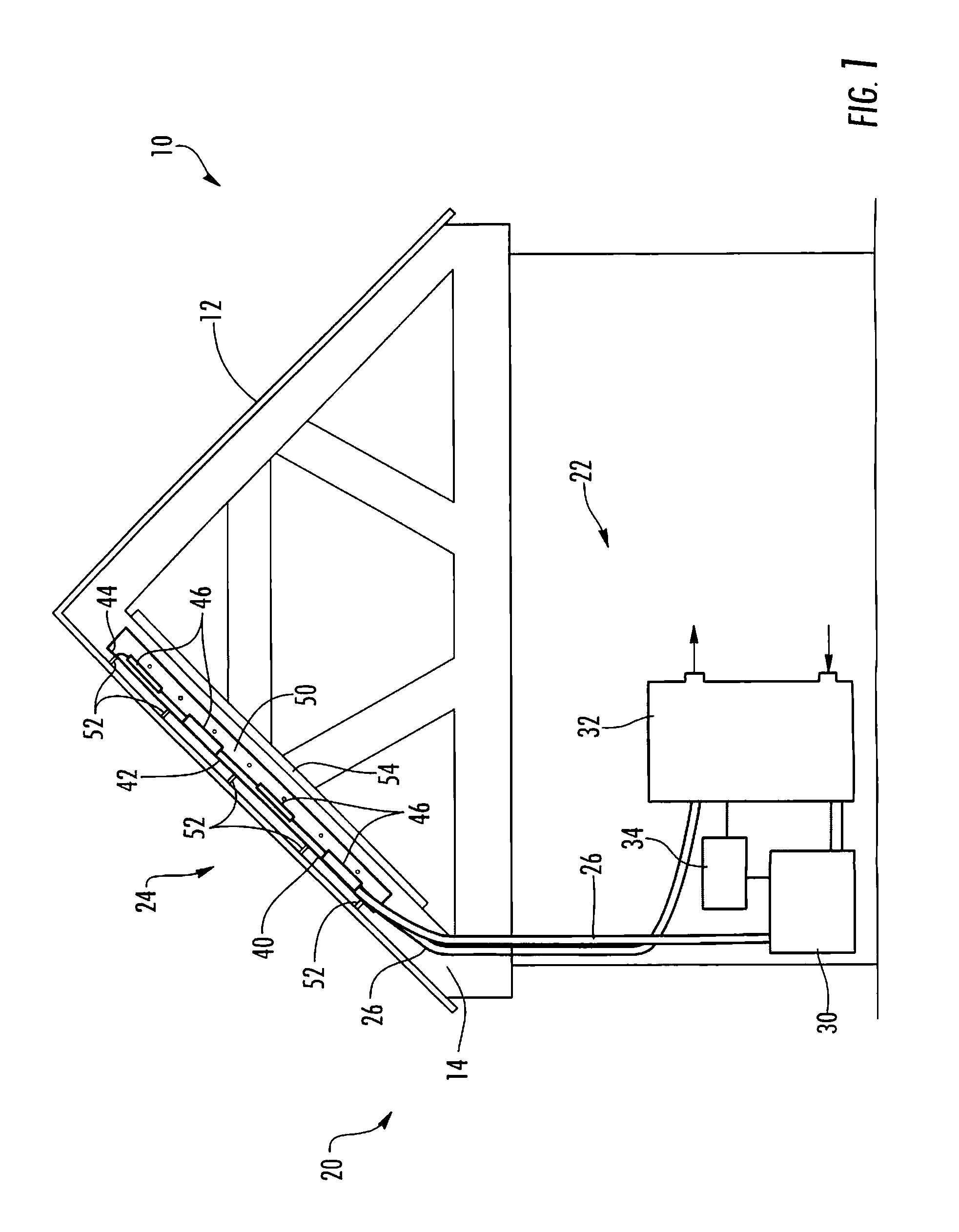Solar heating system and method of forming a panel assembly therefor
a solar heating and panel technology, applied in the field of solar heating systems, can solve the problems of reducing the overall efficiency of the system employing photovoltaic cells, affecting the aesthetics of the roof-mounted components, and the relatively high cost of cells, so as to achieve the effect of convenient and quick adaptation, quick and easy installation, inspection and replacement, and convenient and fast installation and maintenan
- Summary
- Abstract
- Description
- Claims
- Application Information
AI Technical Summary
Benefits of technology
Problems solved by technology
Method used
Image
Examples
Embodiment Construction
[0018]Referring to FIG. 1, building 10 includes a roof 12 supported by a plurality of trusses 14 (only one shown in FIG. 1). A solar heating system 20 includes support equipment 22, an under-roof panel assembly 24 and tubing 26 extending between the support equipment 22 and the panel assembly 24. The support equipment 22 includes a circulating pump 30, a holding tank 32 and an electronic control unit 34.
[0019]Referring to FIGS. 1 and 2, the panel assembly 24 includes a panel 40 formed of a sheet material having substantially opposed first and second surfaces 42, 44 with the first surface 42 facing toward the roof. A plurality of tubing fasteners 46 extend from, and holding a run of the tubing 26 against, the second surface 44 of the panel 40. Sidewalls 50 extend from the panel 40 and are secured to adjacent trusses 14. A plurality of standoff tabs 52 maintains a predetermined spacing between the panel 40 and the roof 12. An insulating member 54 (the insulating member 54 is removed i...
PUM
| Property | Measurement | Unit |
|---|---|---|
| width | aaaaa | aaaaa |
| width | aaaaa | aaaaa |
| length | aaaaa | aaaaa |
Abstract
Description
Claims
Application Information
 Login to View More
Login to View More - R&D
- Intellectual Property
- Life Sciences
- Materials
- Tech Scout
- Unparalleled Data Quality
- Higher Quality Content
- 60% Fewer Hallucinations
Browse by: Latest US Patents, China's latest patents, Technical Efficacy Thesaurus, Application Domain, Technology Topic, Popular Technical Reports.
© 2025 PatSnap. All rights reserved.Legal|Privacy policy|Modern Slavery Act Transparency Statement|Sitemap|About US| Contact US: help@patsnap.com



